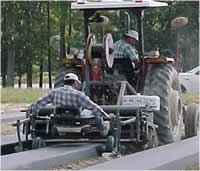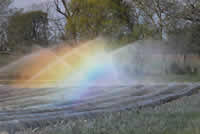Equipment
go.ncsu.edu/readext?185269
en Español / em Português
El inglés es el idioma de control de esta página. En la medida en que haya algún conflicto entre la traducción al inglés y la traducción, el inglés prevalece.
Al hacer clic en el enlace de traducción se activa un servicio de traducción gratuito para convertir la página al español. Al igual que con cualquier traducción por Internet, la conversión no es sensible al contexto y puede que no traduzca el texto en su significado original. NC State Extension no garantiza la exactitud del texto traducido. Por favor, tenga en cuenta que algunas aplicaciones y/o servicios pueden no funcionar como se espera cuando se traducen.
Português
Inglês é o idioma de controle desta página. Na medida que haja algum conflito entre o texto original em Inglês e a tradução, o Inglês prevalece.
Ao clicar no link de tradução, um serviço gratuito de tradução será ativado para converter a página para o Português. Como em qualquer tradução pela internet, a conversão não é sensivel ao contexto e pode não ocorrer a tradução para o significado orginal. O serviço de Extensão da Carolina do Norte (NC State Extension) não garante a exatidão do texto traduzido. Por favor, observe que algumas funções ou serviços podem não funcionar como esperado após a tradução.
English
English is the controlling language of this page. To the extent there is any conflict between the English text and the translation, English controls.
Clicking on the translation link activates a free translation service to convert the page to Spanish. As with any Internet translation, the conversion is not context-sensitive and may not translate the text to its original meaning. NC State Extension does not guarantee the accuracy of the translated text. Please note that some applications and/or services may not function as expected when translated.
Collapse ▲Field preparation

A specialized tractor implement is used to lay the drip tape and the plastic mulch at the same time.
Once the soil as been properly amended for pH and nutrient availability, fields must be prepared for transplanting. Since the premise of plasticulture is a raised bed covered with plastic mulch, growers have come to rely on a multi-function tractor implement that reduces the number of passes through the field. Equipment for shaping the beds, fumigating the soil and laying plastic and drip tape, costs approximately $5,500. New growers may consider hiring a contractor who has the necessary equipment. Custom applicators can form beds, inject fumigant, apply plastic and lay drip tabe in one operation.
Overhead sprinkler irrigation
Strawberry plasticulture requires overhead sprinkler irrigation for establishing transplants, protecting blossoms from cold injury and for evaporative cooling in the event of a spring heat wave that could cause open blossoms to abort. Total cost for overhead sprinkler irrigation would be approximately $2,900 per acre. It is prudent to plan for at least 12 frost and freeze episodes per season. The water requirement for an overhead sprinkler irrigation system is usually estimated on the basis of three consecutive frost or freeze nights. For example, 5.4 acre-inches of water (27,152 gallons equal 1 acre-inch) would be needed for sprinkling at the rate of 0.18 inches per hour (for control down to 24 degrees Fahrenheit), for 10 continuous hours each night over three nights. Furthermore, 1.8 inches per night (10 hours times 0.18 inch) for three nights equals 5.4 acre-inches of water. An irrigation pond would need to hold about 150,000 gallons of water for each acre of plasticulture production under these conditions (5.4 acre-inches times 27,152 gallons per acre-inch equals 146,620 gallons). Several factors should be considered before installing an irrigation system:
- Water supply. Water may come from wells, ponds, lakes and municipal lines. An irrigation pond would need to hold about 150,000 gallons of water for each acre of plasticulture production to provide protection for three consecutive frost or freeze nights.
- Pumping capacity. A pumping capacity of as much as 90 gallons per minute (gpm) or .2 inches per hour is recommended for severe frost and freeze conditions.
- Pump. An electric pump is recommended for reliability so long as a reliable electric power service is available.
- Sprinkler type. Low-impact sprinklers are preferred.
- Sprinkler spacing. A 40-foot by 40-foot triangular spacing will greatly improve the sprinkling distribution pattern under higher winds as compared to matted-row spacing of 60-foot by 60-foot.
Drip irrigation

Overhead sprinkler irrigation is essential for establishment, frost protection and evaporative cooling.
The deep 8- and 10-inch beds require drip irrigation because capillary movement of water is poor. Drip irrigation provides the most efficient use of water and fertilizer. Many deep wells are fairly clean and require only a screen filter to remove particles. However, the presence of precipitates or other contaminants in the water should be determined by a water-quality test before considering the well for a drip system. Any surface water source, such as a stream, pond, pit or river, will contain bacteria, algae or other aquatic life, making sand filters or other special filters a necessity.
For strawberries, drip tape is used to wet a continuous strip along the center of the row. A 12-inch emitter spacing is recommended for sandy loam and clay soils. For coarse sands, 8-inch emitter spacing is recommended. Drip emitter discharge rates are generally expressed in gallons per minute (gpm) per 100 feet of length for the selected emitter spacing. A common tape selection for plasticulture strawberries on sandy loam or clay soils uses 0.40 gpm emitters: 24 gallons per hour (gph) per 100 feet. To determine field water requirements in gpm per acre, simply multiply 24 gph times 87.12 (the number of 100-foot row units per acre on five-foot bed spacing) and divide by 60, which yields 35 gpm. The cost to install a drip irrigation system to these specifications is approximately $1,000 per acre. An additional cost of approximately $170 per acre will be required annually for the drip tape used in the rows.
Because strawberries grown on plastic mulch are considered annuals and are grown for only one season, thin, disposable drip tape (8 mils thick) is commonly used. Once a drip irrigation system is installed, the crop can be fertilized via the drip system (fertigation).


